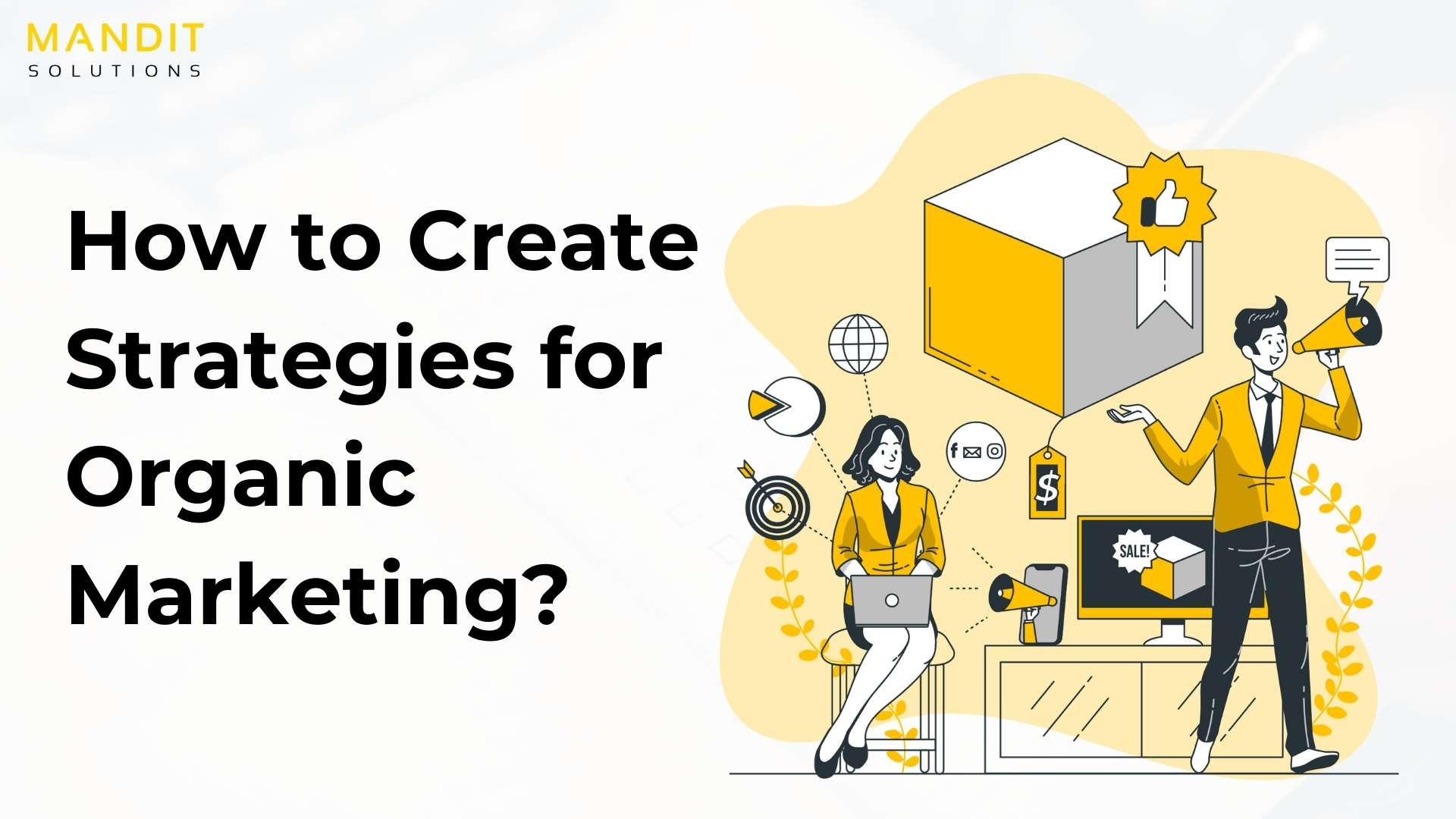
Do you wish to study the best practices for developing a profitable organic marketing plan that will bring in more customers and more leads? In this article, we will examine the fundamentals of what constitutes a successful organic marketing strategy and how to implement it. I’m confident that you will find this data to be pertinent and useful in expanding your company.

Let’s define organic marketing and what it isn’t right from the bat. When put together, the many components of organic marketing form a unified and all-encompassing strategy for inbound promotion. It involves producing content that is both high-quality and widely visible in order to attract potential customers through their preferred methods of finding information online.
Successful organic marketing campaigns also make use of user experience (UX) design and conversion funnel optimization to turn organic site visitors into paying customers.
The goal of organic marketing is not to do nothing and hope for success. Meaningful expansion is achieved via deliberate planning.
In addition, it requires a substantial time commitment. It’s much less difficult to spend money on ads than it is to develop and manage a successful organic marketing plan. Yet, organic promotion is far more productive for long-term, sustainable expansion.
It is expected that around 70-80% of people would overlook sponsored adverts when they make a search engine inquiry.
They will focus on the organic outcomes instead, and this is because they trust such findings more.
To the average consumer, organic marketing makes more sense because of its more unforced nature.
Paid commercials tend to be perceived as false and overbearing. This is why the average click-through rate of sponsored advertising and organic results are 1.91% and 31.7% respectively.
The best part about organic marketing is that it can be used indefinitely.
Even though it may take some time for the campaign to bear fruit, your website will benefit from the steady stream of visitors it attracts once you’ve put in the work to get it rolling.
However, the long-term benefit of organic promotion is well worth the wait, which might be months or even years.
You should make sure you have everything in place for success if you are going to put in the time and effort to attract organic visitors. You’re not seeking visitors only for the purpose of having them visit your site. You need people to visit your site often in the hopes that some of them will become paying clients. You’ll need to make sure you have the following before you begin:
Organic marketing strategies should be a part of any comprehensive marketing plan. Some examples of organic strategies are:
To start driving organic traffic, make a list of blog post ideas and commit to publishing one blog every week. The best blogs take into account what the reader wants to know and provide useful information in an easy-to-understand way. Focus on evergreen tales (stories that will always be of interest to your audience) rather than passing fads. To boost the appeal of your organic content, try using new strategies like commissioning guest articles from industry leaders or developing infographics.
With email marketing, you can maintain contact with your regular customers by sending them newsletters that include information about your business, as well as advertisements, specials, and new offerings. The use of discounts and special offers in email marketing campaigns helps increase online sales. Many organizations, known as email service providers (or ESPs), offer services that make it easy and inexpensive to launch an email marketing campaign.
Making use of social media to spread your content and attract new customers is a simple and cost-effective strategy. If you want your posts to be constant, you should make a calendar for them and think about how each article will benefit your target audience. Sharing is the lifeblood of every online business, and posting on your social media platforms can assist encourage sharing and boost your word-of-mouth advertising.
Search engine optimization (SEO) is a form of online marketing that focuses on increasing a site’s visibility in the search engines via unpaid, or “natural,” search results (SERP). Organic search results, as opposed to sponsored results like pay-per-click (PPC) adverts, have a higher page rank in search engines because they contain relevant, high-quality material that answers users’ questions. To kick off your SEO plan, conduct keyword research to identify the most relevant terms for your industry. Then, using those keywords as inspiration, develop engaging blog posts to boost traffic and optimize your site’s landing page to enhance the user experience. SEO Courses in Pune
Case studies are an excellent way to demonstrate the value of your products and services to a potential clientele. White papers are also a great way for businesses to introduce new offerings to consumers. Use a landing page on your website and promote it using search engine optimization, paid advertising, social media, and other channels to get the word out about your offer.
In order to be successful, an organic marketing plan needs time and dedication to develop. However, the outcomes are superior to those of randomly trying things out. It’s risky business to use the “shoot from the hip” approach in marketing.
An efficient marketing strategy may be created by adhering to these seven stages. You start by identifying your context, target demographic, objectives, strategy, tactics, channels, and resources. Step four, evaluation and improvement, may be implemented once you start seeing results from your marketing efforts.
Although marketing might be challenging, success is possible with preparation and experience. Initiate a strategy for organically expanding your business’s customer base.
Copyright © 2025 Mandit Solutions Private Limited
| Cookie | Duration | Description |
|---|---|---|
| cookielawinfo-checkbox-analytics | 11 months | This cookie is set by GDPR Cookie Consent plugin. The cookie is used to store the user consent for the cookies in the category "Analytics". |
| cookielawinfo-checkbox-functional | 11 months | The cookie is set by GDPR cookie consent to record the user consent for the cookies in the category "Functional". |
| cookielawinfo-checkbox-necessary | 11 months | This cookie is set by GDPR Cookie Consent plugin. The cookies is used to store the user consent for the cookies in the category "Necessary". |
| cookielawinfo-checkbox-others | 11 months | This cookie is set by GDPR Cookie Consent plugin. The cookie is used to store the user consent for the cookies in the category "Other. |
| cookielawinfo-checkbox-performance | 11 months | This cookie is set by GDPR Cookie Consent plugin. The cookie is used to store the user consent for the cookies in the category "Performance". |
| viewed_cookie_policy | 11 months | The cookie is set by the GDPR Cookie Consent plugin and is used to store whether or not user has consented to the use of cookies. It does not store any personal data. |